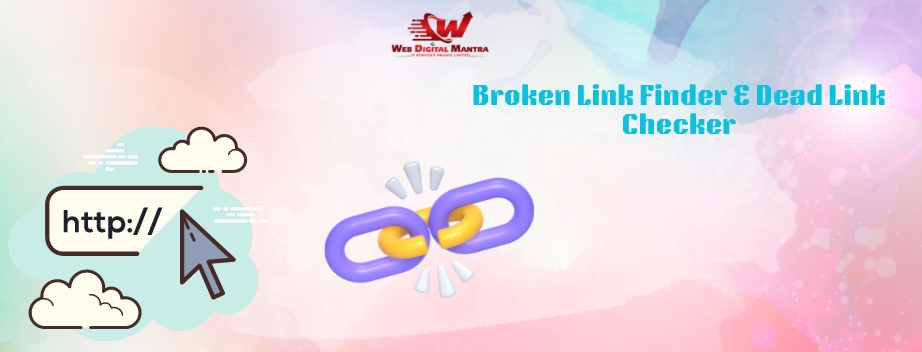
Maintaining the functionality of your website is essential. Maintaining a website requires finding and fixing broken links. The user experience, search engine rankings, and general reputation of a website. All can suffer from broken links. The key to minimizing these risks is to use a broken link detector. Also, a dead link checker. The importance of these tools. How they work. Some of the best options available. In terms of cost and accessibility. All will be covered in great length in this blog.
Understanding what broken links are essential. It is so before implementing tools and strategies. A broken link is a hyperlink on a website. Which is no longer operational as a result of deletion, relocation without redirection, or an incorrect URL. Broken links can lead to error pages like the infamous 404 error, which can negatively impact user experience.
Broken links cause multiple issues for website owners, developers, and users alike:
User Experience: Users may decide to quit a website altogether if they find broken links, which aggravates them. Higher bounce rates are the outcome, which is bad for the functionality of websites.
SEO Impact: When evaluating a website's quality, search engines such as Google take into account broken links. A website's SEO ranking may suffer by having too many broken links. Broken links can be interpreted by Google crawlers as an indication that the website isn't being properly maintained.
Diminished Credibility: When a link is broken, it speaks ill about a company or content provider, which undermines credibility. If visitors often come across broken links, they could think the website is out-of-date or untrustworthy.
You may fix broken links on your website before they have a detrimental effect on its performance by using a broken link finder or dead link checker. These technologies make sure your website keeps working, which enhances SEO and user experience.
A broken link checker tool scans a website's internal and external links and identifies URLs that return error responses like 404 (Not Found) or 500 (Internal Server Error). Most broken link checkers operate as follows:
Crawling the Website: The tool does a crawl to collect data about all of the links that are found on the webpages.
Testing the Links: After then, each link is examined to make sure it points to a legitimate place. The program looks for broken links, indicated by HTTP status codes such as 500 and 404.
Reporting: The program creates a report that includes a list of all the broken or dead links on the website, the status code, and the particular pages where the problems were discovered.
When choosing a broken link finder, look for tools that offer the following features:
Thorough Scanning: Verify that the instrument is capable of scanning both exterior and internal links.
Configurable Parameters: Certain tools enable users to personalize their scans by establishing parameters such as the quantity of links to examine or the extent of the crawl.
Detailed Reporting: Seek for a solution that offers reports that are easy to understand and use, outlining the locations of any broken links.
Regular automated scans are a feature of the best programs; they will find broken links as soon as they exist.
Free & Paid Versions: Think about whether the tool's free or premium version is more suited for your website based on your needs.
Now, let’s dive into some of the best tools for identifying broken links.
One of the most reliable and widely used web broken link checkers is the W3C Link Checker. It’s free and highly customizable, allowing users to specify what kind of links they want to check (internal or external) and the depth of the crawl.
Pros:
Completely free.
Detailed reports.
Customizable options.
Cons:
May be slower than other tools when scanning large websites.
Google Search Console is a powerful, free tool that webmasters can use to identify broken links on their website. Under the "Coverage" report, Google provides information about error pages, including 404s, which helps in identifying and fixing dead links.
Pros:
Free and easy to use.
Direct integration with Google services.
Cons:
Limited to Google’s indexing system, which may not catch all broken links in real-time.
The aptly named Dead Link Checker is a popular free broken link checker that is both fast and easy to use. It offers a bulk URL checking feature, making it perfect for websites with many pages.
Pros:
Free to use with no registration required.
Fast scanning.
Cons:
Limited advanced features compared to paid tools.
For WordPress users, the Broken Link Checker plugin is a must-have. It monitors your website for broken links and missing images, notifying you via the dashboard if any problems are found.
Pros:
Seamless integration with WordPress.
Provides real-time notifications of broken links.
Cons:
Can slow down your site, especially on shared hosting.
Ahrefs offers one of the most comprehensive broken link finder tools as part of its broader SEO toolkit. Ahrefs crawls both internal and external links, and its user-friendly interface makes it easy to identify and fix broken links.
Pros:
Detailed reporting.
Part of a larger SEO toolkit.
Cons:
Paid service with no free version.
Screaming Frog is a desktop application that is excellent for performing site audits, including identifying broken links. It is one of the most comprehensive website link checker tools available and is a favorite among SEO professionals.
Pros:
Offers both free and paid versions.
Comprehensive reports that include additional SEO insights.
Cons:
The free version is limited to 500 URLs per crawl.
Dr. Link Check is another excellent site link checkertool that identifies broken links, missing images, and other potential problems on your website. The tool scans websites in real-time, making it a reliable option.
Pros:
Free version available.
Provides email notifications for broken links.
Cons:
Free version limits the number of links you can check.
Although Xenu’s Link Sleuth is a bit dated, it is still one of the most powerful and free options for finding broken links on large websites. It offers fast scans and is relatively easy to use.
Pros:
Free to use.
Excellent for large websites.
Cons:
Outdated user interface.
Plan routine scans with your preferred broken link checker tool to make sure your website is always free of broken links. Numerous products come with automated checks, which free up your time so you may work on other projects while the tool does its job.
External links are subject to change at any time, while internal links are under your control. Making routine inspections will guarantee that your external links remain work and take visitors to live websites.
As soon as broken links are discovered, take immediate action. To avoid more problems, either update the link, reroute it to a legitimate URL, or delete it completely.
It is imperative to take immediate action if users are reporting broken links on a regular basis. A useful source of information for website maintenance is user feedback.
Preserving the authenticity of the links on your website is crucial to providing a seamless user experience and raising your search engine ranking. You can quickly find and repair broken links on your website, keeping it operational and user-friendly, using the correct web page broken link checker application. Make sure the broken link detector you choose fits the unique requirements of your website, whether it's a paid service like Ahrefs or a free one like Google Search Console.
You may prevent broken links from being a problem, build your website's trustworthiness, and raise its search engine ranks by consistently utilizing a broken link detector. In the end, this will help your website fulfill its potential.
1.How to check dead links?
Simply put your site URL into Ahrefs Site Explorer, go to the “Backlinks” report, and click “Broken” to see the strongest broken backlinks of your website. Alternatively, you can also go to “Best by links” report, and apply the “404 not found” filter in “HTTP codes.”
2.How do I see a dead link?
The Wayback Machine Chrome extension detects dead web pages and gives you the option to view an archived version of the page.
3.Are dead links bad for SEO?
In short, yes! Increasingly, user experience is proving to be highly valued by Google. If you think about it, a great user experience is a sign that you are optimizing your site efficiently, correcting any broken links and creating regular and engaging content.
4.What is the error dead link?
A dead link, also Broken Link called, is a Hyperlink on a web page that no longer works and instead leads to an error or blank page.
 Bhoomika Hiremath
Bhoomika Hiremath
Copyright @2020. All Rights Reserved by WEB DIGITAL MANTRA IT SERVICES PVT LTD
Post Reviews